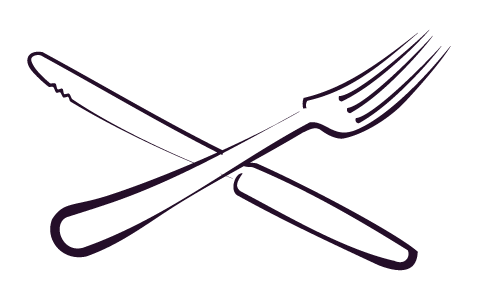Menu Planning

THE MENU
A menu is a list of prepared dishes of which are available to a customer and by its content and presentation should attract the customer and represent value for money.
The aim is to give the customer what he wants and not what the caterer thinks the customer wants. In general it is better to offer fewer dishes of a good standard rather than having a wide choice of dishes of mediocre quality.
Traditional cookery methods and recipes form a sound foundation of knowledge for the craftsman and the caterer. However, fashions in food change over the years and some customers tend to look for new dishes, different combinations of food and fresh ideas on menus.
The so-called Cuisine Nouvelle would probably be more correctly named as Contemporary Cooking as it represents new thinking, new food combinations and a lighter style of cooking with the accent on creativity, presentation, simplicity and health. Staff should be aware of changes in contemporary cooking and should be prepared to experiment and create new and original recipes in order that the caterer can continue to offer the customer fresh interest, variety and pleasure in his or her menus.
It is necessary to make certain that menu terms are expressed accurately so that the customer receives exactly what is stated on the menu.

INTRODUCTION

SATISFYING THE CUSTOMER
It also includes utilizing the skills and the abilities of the available personnel. The menu determines what a food service operation offers, this indicates all equipment needed, staffing and of course food. An efficient menu should make full use of its staff and facilities. The menu should offer variation and flexibility to accommodate changing consumer tastes, seasonal availability, food cost and competition.

Presentation of the Food
The eyes eat too. The meal service or the food presentation has an important effect on customer acceptance.

THE TYPE OF INSTITUTION
This is the first consideration in planning menus. A hotel, a restaurant or a fast food, each establishment should focus on the people to be served. Satisfying the guests requires knowing them. The successful menu maker will know the occupation and the economic status of the patrons. These factors are significant in their acceptance of certain foods. The lifestyle of the client must be considered, national dishes, methods of preparation and the seasoning must suit their taste. A well-known German saying goes: “What a farmer doesn’t know he doesn’t eat”. A real connoisseur is usually curious to try dishes, he particularly enjoy those foods that have been prepared with imagination, skill and flair.

The Physical Facilities
The size available for the kitchen and the restaurant will influence the menu pattern. The amount of space and the type and capacity of the equipment will determine the variety of the products that can be prepared and the number of persons that can be served. The menu influences equipment needs.

Staffing
The number of employees available and their skills are controlling factors in menu planning. In small establishments where only one or two cooks are employed the menus must obviously be quite simple with limited selections. In a larger commercial enterprise, the skill and size of the labor force affect the number of selections that can be offered on the menu. The trend towards the use of more prepared food, prepared meats, poultry and fish products, processed vegetables, mixes and frozen foods aids the menu planner. The wise menu planner will avoid over loading an individual or a department with a large number of menu items. A well balanced work schedule is important to control the standards of the quality and maintain the morale of the work force.

Variety
Variety in the menu should be introduced not only through the food items, but also in terms of methods of preparation and texture, color, form and shapes of the food. The planner must have a vast knowledge of foods and must also be able to plan and visualize interesting combinations of each. Monotony can be avoided by providing food of different seizes, shapes and heights on the same menu. Every course in a menu must be fundamentally different from the others in terms of appearance and preparations. The foods used in the preparations should not be repeated in any form in the course that follows. Sauces must differ from each other. A balance on red meats and white meats should be offered. Variety may also be introduced through colors. A menu that provides an assortment of foods with rich natural colors will have more eye appeal and be easier to merchandise. Artificial coloring should not be used.

Balance
This is particularly important when compiling special party menus. – Never repeat the basic ingredient on the same menu. – Do not repeat the same word on a menu. – Light dishes must be served before heavy ones. – Cold dishes must be served before hot dishes. – Texture of food should alternate between soft and crunchy foods. – Strong seasoning should not be repeated for more than one course. – Mild foods should be served before savory ones. – Basic sauces should vary and not be repeated. – Menus should fulfill nutritional needs.

Colors
This important factor affects food presentation. The eye appeal of a dish will invite you to eat and stimulate your appetite.

Combination of Flavors
The skillful menu planner will consider not only the sweet, salty, bitter and sour flavors but also those of spicy and highly seasoned foods.
The wise planner will use initiative and imagination in the planning to avoid monotonous repetitions.
The season of the year influence on food preferences, cold weather, hot summer, festive seasons. Availability of certain foods will vary with the season.

The Budget
The budget will stipulate the projected income and the amount of purchase of food. Food sales, the major source of potential income must also cover labor and operation costs. The proposed charge per head is an important factor when selecting food for any menu. When you have a menu with a moderate or a low price, you cannot consider serving expensive items. In general the food cost should not exceed more than 40% of the selling price. The menu should be planned in accordance with the established food cost percentage. To maintain this percentage it is necessary to calculate daily food costs, provide and use standardized recipes, know raw foods and portion costs and adjust prices and menu selections as cost fluctuates. The daily food cost is based on storeroom requisitions and direct purchases. A standard recipe system is essential for successful food cost control. The menu planner must know and keep these costs up-to date. Portion control is necessary, portions should be standardized in relation to costs.

The Season of the Year
When menus have to be prepared long time in advance of actual date of production, the season of the year must be considered. – The weather may be hot or cold – The food is best when in ” season “. – Special dishes for special days of the year should be considered.

Breakfast Menu
The first meal of the day, the breakfast menu may be table d’hote (set) or a la carte . A typical continental breakfast does not include any cooked dishes. We distinguish Continental, English, American, Asian and a la carte breakfast.

Luncheon Menu
Almost all foods are suitable for serving at luncheon during the hot season. Cold foods are best served mainly as starters and a cold buffet should be available. Luncheon menus can be compiled from the following foods : – Cold hors d’oeuvre – Soup – Fish – Entrees (this is a dish of meat or poultry which is garnished with vegetables) – Dessert or Fruits.

Tea Menu
A top class hotel will usually offer this particular type of menu.

Dinner Menu
Table d’hotel or a la carte menu are usually offered for dinner. The number of courses can vary from 3 to 10. Nowadays, people tend to spend more time for dinner than for lunch, therefore dinner menus are more elaborate than luncheons.

Supper Menu
In former times, supper was served at lunch time. Today sophisticated foods and gourmet meals are served for supper, late at night, usually after a concert of the theatre.

Brunch Menu
Served mainly in hotels on Sundays, it is a combination of breakfast and lunch. Usually families with children like to enjoy brunch parties.
Special Menus
These are usually tailor-made menus where the host chooses the items. Most large restaurants and many hotels offer sets of menus for the guest to choose from. We distinguish :
Cocktail parties: hot and cold snacks and canapes.
Heavy cocktail parties: carving station, cooking demonstration.
Buffet dinners: regular items with multiple choices : cold, soup, hot, dessert.
Theme parties B.B.Q., ethnic, beach, jungle etc.
Special events or celebrations, Birthday, Wedding Anniversary etc.
Traditional buffets: Christmas, New Year, Valentine’s day.
Food festivals: Swiss, Italian, US., Cajun, Mexican etc.
Coffee Breaks.
Special menus can also be served table d’hote style, usually with only one choice in each course. The number of customers may vary from 10 persons to thousands.
Buffets are arrangements of a large variety of dishes. They can be very attractive, sometimes with ice carvings, sculptures, flowers or other decorations that will enhance the presentation.
The Menu of the Day
The printed menu is an important merchandiser. The customer frequently forms his first impression of the restaurant from the menu that is presented to him.
CONCLUSION
What does the customer want ” should form the starting point for menu planning. Proper menu planning takes time. Hopeful aids for planning a menu include the following :
- Copies of old menus.
- Market survey of competitors.
- Standard recipes.
- Information and listing of seasonal foods.
- Cost per portion.
- Sales history
- Menu Engineering
- Production records.